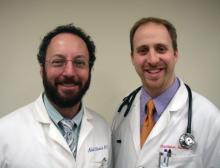According to several recent surveys, it is clear that a majority of U.S. physicians have purchased an electronic health record. What is unclear, however, is how – or even if – those EHRs are being used in their practices.
With the attestation period for "meaningful use" well underway, many providers are finding themselves overwhelmed as they attempt to optimize use of their EHR to meet the demands of the stage 1 criteria. Even worse, many EHR vendors have radically updated their software to achieve certification requirements, including a requirement that practices install an upgrade before they begin to attest.
As a result, users suddenly find that the revised product obligates them to essentially learn an entirely new system, with a dramatic drop in productivity.
This begs the question: What steps can EHR users take to make adapting to meaningful use as painless as possible?
Step 1: Understand the Basics
Despite countless articles and conversations about meaningful use, when asked, physicians know surprisingly little about what is really contained in the criteria.
As we’ve written in previous columns, the requirements center around the goals of improving access to medical services, delivering higher-quality care based on established standards, and collecting robust public health data to track compliance and utilization. The specific points are all related to these goals, and providers are encouraged to read through them in order to understand why effective EHR work flow is critical to adapting to meaningful use.
The criteria can be found on the CMS website, and included with these are tools and resources to help practices grasp the nuances of the attestation process. By keeping the criteria in mind, physicians can be sure to employ the most relevant components of their EHR from day one, and develop documentation habits that target the incentive goals.
Step 2: Collect the Right Data
For better or worse, computers are only as intelligent as the data provided to them. For this reason, it is essential to ensure the most important information is entered into an electronic health record in a way that is useful and retrievable.
Most EHR vendors encourage providers to employ prompts and check boxes as much as possible in their documentation, and avoid the temptation to "free type" when recording a patient encounter. This can be critical, not only for coding and charge capture, but also to ensure that facts are retrievable when attesting to meaningful use.
As an example of proper data collection, one of the core requirements of the meaningful use criteria is that eligible providers "record smoking status for patients 13 years or older" (core requirement 9). When seeing a patient – especially a young teenager – it can be quite tempting for a physician to simply type "no cigarette use" in the patient’s note. Unfortunately, this cannot be later retrieved by the EHR’s reporting function.
Instead, the clinician should be sure to follow the vendor’s protocol to make sure smoking status is recorded as a discreet data point. This is often done through a prompt under the patient’s social history.
This further underscores the value of knowing the criteria as noted above, so providers are sure to look for the proper documentation points for discrete data collection.
Step 3: Don’t Be Afraid to Ask for Help
Practices that have purchased a certified EHR can be assured that they can use the software to achieve meaningful use, because the vendor was required to prove this in order to obtain certification. Unfortunately, this does not mean that the steps involved in getting there will be obvious or easy.
For this reason, it is critical to press vendors to provide help and support that specifically target successful attestation. Many vendors do this by simply providing a manual or electronic documentation. Others take a more creative and user friendly approach. One such vendor is MedEnt. Its website offers not only help documents, but also video tutorials that take users step by step through the proper clicks and keystrokes necessary to achieve each requirement.
In addition to self-learning, vendors should also be willing to provide live help to individual practices. This may come through remote or on-site training sessions. As a word of caution, however, be aware that these may incur additional fees and/or annual support costs. Often, this is something to be negotiated up front when initially purchasing an EHR product. Either way, every practice will need support at some point, so the value of this investment cannot be overstated. Once that support system is in place, be sure to use it for all it’s worth.


